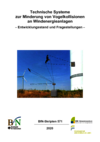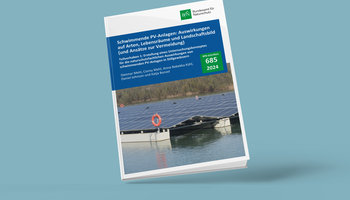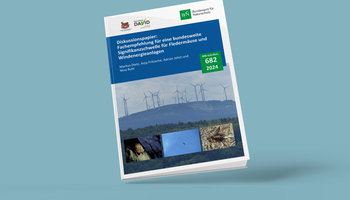The project "AKS-Praxis" examines the applicability of anti-collision systems under the new regulatory requirements of the Federal Nature Conservation Act (BNatSchG). In addition to technical requirements for reliability and effectiveness, recommendations for the use of the systems are being revised. Furthermore, the project supports the exchange of experience gained during testing and trial operations, takes up questions of application under the provisions of the BNatSchG and contributes to the dissemination of findings through workshops.
Anti-collision systems are mentioned in the new Federal Nature Conservation Act (BNatSchG) as one of the possible protective measures with which collision risks of birds at wind turbines can be avoided or reduced. The research and development project, which is being carried out by the Competence Centre for Nature Conservation and Energy Transition (KNE), aims to expand existing knowledge on anti-collision systems and to adapt existing recommendations to the rapidly growing experience with the technology.
In concrete terms, for example, there is still a need to improve the determination of the species-specific reaction distance. Monitoring this range with a high degree of detection reliability is a prerequisite for timely shutdown. The employed technologies should be able to cover this range reliably. By evaluating data on the flight speed of birds and findings on wind turbine-specific shut-down times, the previous assumptions can be concretised and validated. The project also deals with the requirements for the coverage of potential sites and the extent to which standards for determining the coverage rate can be formulated will be examined.
The aim of the project is to place the application of anti-collision systems in permitting procedures on a scientifically sound basis. At the same time, the both the preferability compared to other forms of shutdown and the reasonableness is to be tackled. In the new BNatSchG, the reasonableness restrictions limit the application of protective measures and especially of anti-collision systems. In the course of the project, it will therefore also be clarified which application restrictions result from the reasonableness restrictions and how these can be optimised if necessary.
Another focus of the project will be on the transfer and sharing of knowledge. For this purpose, workshops and webinars will be designed to train users of anti-collision systems. In addition, the project will publish interim publications for practitioners.

Vögel und Windenergienutzung: Best Practice-Beispiele und planerische Ansätze zur Konfliktlösung
BfN-Schriften 634 (2022)
2 MB · pdf

Anforderungen an technische Überwachungs- und Abschaltsysteme an Windenergieanlagen (2021)
BfN-Skripten 610 (2021)
1 MB · pdf

Technische Systeme zur Minderung von Vogelkollisionen an Windenergieanlagen
BfN-Skripten 571 (2020)
549 KB · pdf
Project Management
Dr Elke Bruns
Competence Centre for Nature Conservation and Energy Transition KNE gGmbH
Neue Gruenstr. 18, D-10179 Berlin
Project manager:
Maik Pommeranz
maik.pommeranz(at)naturschutz-energiewende.de
Federal Agency for Nature Conservation
Branch Leipzig
Alte Messe 6, D-04013 Leipzig
Jens Ponitka
jens.ponitka(at)bfn.de
03.04.2024
Weiter

03.04.2024
Weiter

19.03.2024
Weiter
